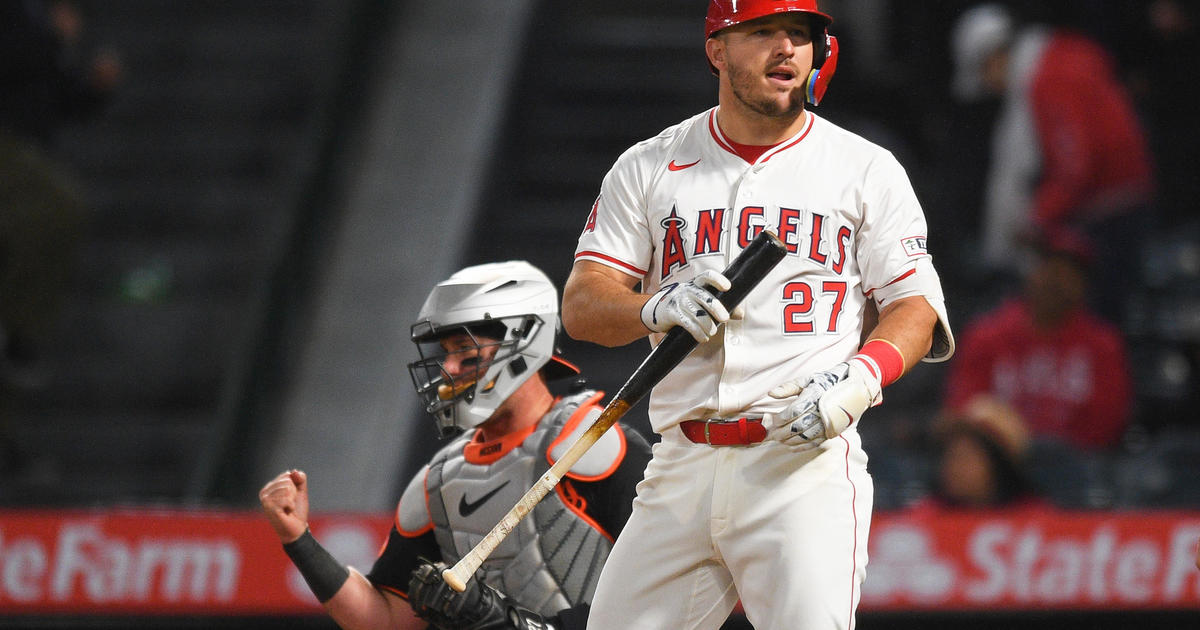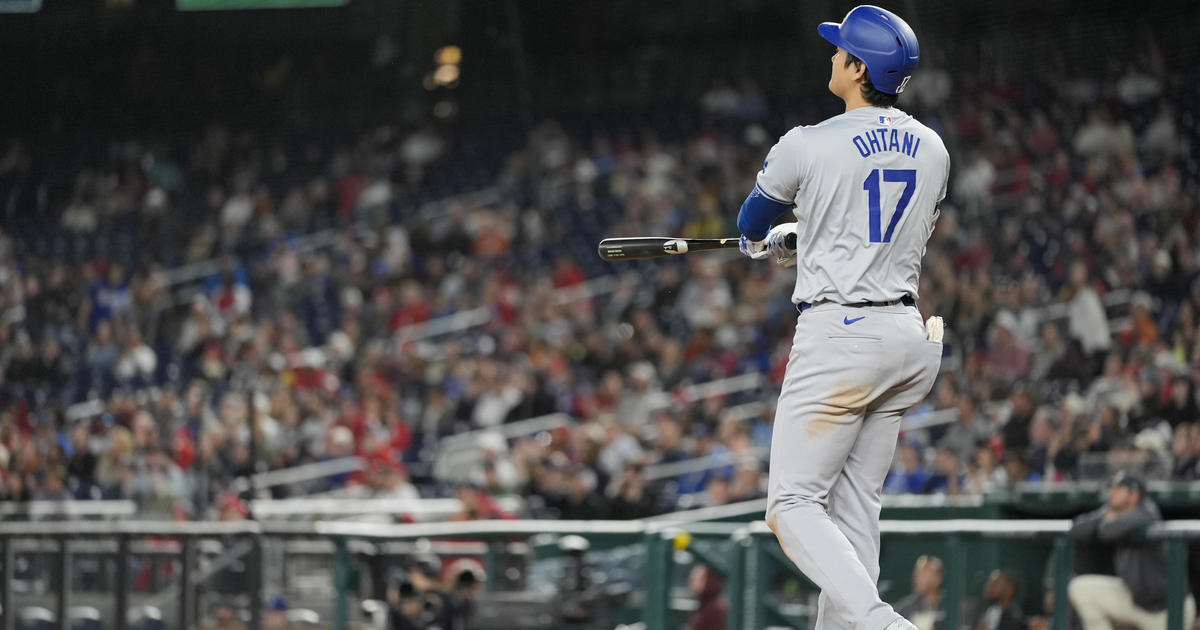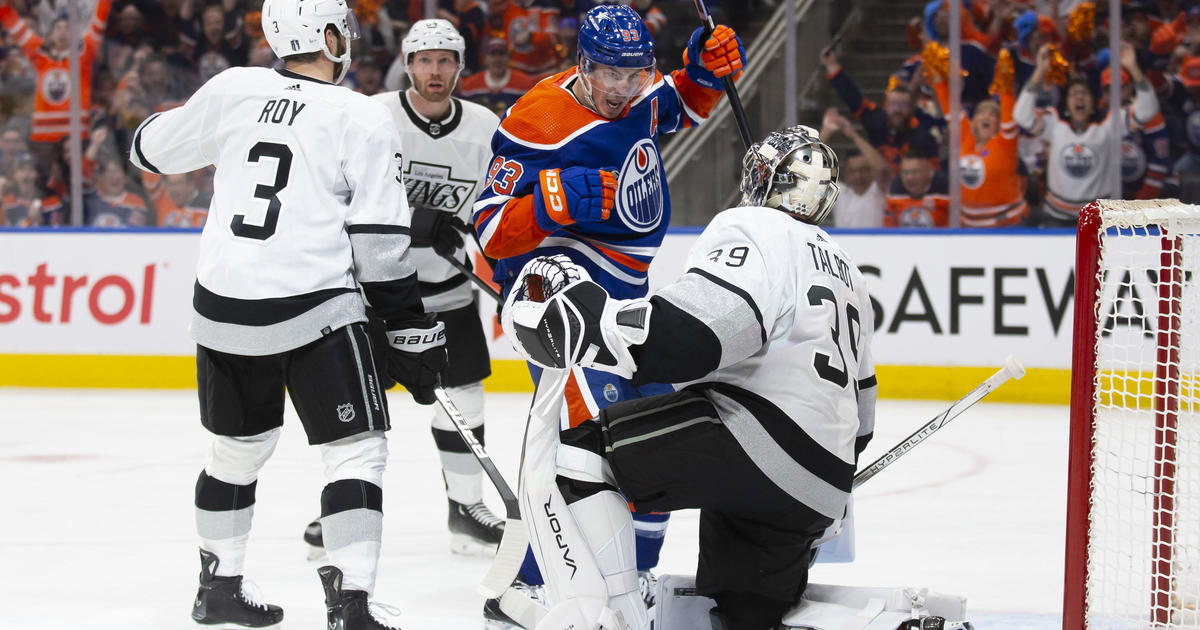Cy Young Winner Kershaw On New Protective Cap For Pitchers: 'It'd Take A Lot Of Getting Used To'
NEW YORK (AP) — Big league pitchers might feel safer on the mound this season.
Major League Baseball has approved a protective cap for pitchers, hoping to reduce the damage from line drives to head that have brought some terrifying and bloody scenes in the last few years.
The heavier and bigger new hat was introduced Tuesday and will be available for testing during spring training on a voluntary basis. Major leaguers and minor leaguers won't be required to wear it -- comfort is likely to be a primary concern.
"Obviously, it'd be a change," two-time Cy Young winner Clayton Kershaw of the Los Angeles Dodgers told the MLB Network. "I'm definitely not opposed to it."
"I think it'd take a lot of getting used to," he said. "You don't look very cool, I'll be honest."
The safety plates made by isoBLOX are sewn into the hat and custom fitted. They weigh an extra six to seven ounces -- a baseball weighs about five ounces, by comparison -- and offer protection to the forehead, temples and sides of the head. They'll make the hats about a half-inch thicker in the front and around an inch wider on the sides.
Several pitchers have been hit in the head by line drives in the recent seasons. Brandon McCarthy sustained a brain contusion and skull fracture after being struck in 2012 and Doug Fister was hit during the World Series that October.
Toronto's J.A. Happ and Tampa Bay's Alex Cobb were sidelined after being hit last year.
McCarthy tweeted that he had already tried out the fortified cap and that it was "headed in right direction but not game ready."
Said Arizona reliever Brad Ziegler: "I think they're on the right track, but the hat they approved isn't remotely close to comfortable enough to wear in games."
In an email to The Associated Press, he said, "If you're not 100 percent focused on executing your pitches, you have almost no chance of success. And that hat is uncomfortable enough that it would be a big distraction to wear it."
"We talked to a lot of guys who had been through this, and they provided a wealth of information to help us," said Bruce Foster, CEO of the 4Licensing Corporation, parent company of isoBLOX. "We went through a myriad of different designs to develop this."
Foster said the cap went through extensive testing and provided protection from line drives up to 90 mph in the front of the head and 85 mph on the side.
Line drives in the majors have been clocked at even faster rates.
While the hat is "slightly bigger" than a regular baseball cap, Foster said: "It's not going to be a Gazoo hat."
Several years ago, MLB introduced larger batting helmets that offered increased safety. But big leaguers mostly rejected them, saying they looked funny and made them resemble the Great Gazoo, a character on the "The Flintstones" cartoon series.
In recent seasons, pitchers have said they would try padded caps, provided they weren't too cumbersome.
"You see guys get hit with line drives. I know in the last couple of years there have been several of them. So it happens. You want to be wary of it," All-Star closer Glen Perkins of the Minnesota Twins said. "Player safety is important. I think finding a solution is good."
"But by the sounds of what they have, I don't know if that's entirely feasible to go out there with basically a helmet on your head and pitch. Without seeing it or trying it on, I hate to make a blanket judgment. But just thinking out loud, that seems a little bit much. Just the bulkiness," he said.
In December 2012, MLB medical director Dr. Gary Green presented ideas on protective headgear to executives, doctors and trainers. The prototypes under study included some made of Kevlar, the high-impact material often worn by military and law enforcement and NFL players.
Several companies tried without success to make a product that would be approved by MLB and the players' union. While isoBLOX was first to get the OK, other firms still might submit proposals.
Foster said the cap's design diffuses the impact of being hit, rather than only absorbing the shock. The technology will be available on the retail market for ballplayers of all ages in a form of a skull cap.
A memo from MLB will advise teams that the caps are available in spring training, and pitchers who express interest in testing will be fitted. MLB can require minor leaguers to wear it, but has no plans now to do that.
"I think it will be one of those things that people will wear them when they have to wear them. Maybe a guy here or a guy there," Perkins said.
Star closer Grant Balfour said, "I am always appreciative of anything that will make the game safer. That being said, I may try it. Just not sure yet until I see it. Has to fit with a cap and be comfortable."
MLB didn't make the use of helmets or protective cap inserts mandatory for batters until the National League required them for the 1956 season. Helmets weren't required until the 1971 season and, even then, they weren't mandatory for players already in the big leagues. An earflap on the side of the head facing the pitcher was required for new players starting in 1983.
"It's nice to see any sport take precautions to prevent injury," San Francisco reliever Javier Lopez said. "That being said, I look forward to seeing what the finished product looks like. And if it helps just one pitcher, then it's worth it. It's always nice to have safety nets."
Added Boston reliever Craig Breslow: "I'm not certain how many players will be testing the new equipment, but I think all at least appreciate the effort. "
(© Copyright 2013 The Associated Press. All Rights Reserved. This material may not be published, broadcast, rewritten or redistributed.)



